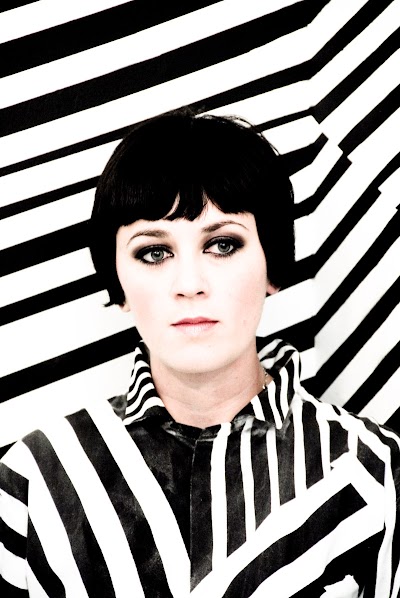Alasdair Duncan recently caught up with Ladytron's beguiling vocalist, Helen Marnie, to try and unravel some of the mysteries surrounding the band.
Critics often reach for words like 'frosty' and 'chilly' when describing Ladytron's music, but in the presence of singer Helen Marnie, with her warm Scottish burr and sweetly dorky disposition, it's impossible not to feel at least a little sunny. "People say that, when we're onstage, we look like we're not having fun," she says, "and that really annoys me. There's this impression that we always wear black, like characters in a '60s film, but I actually wore a purple top on stage last week!" A beat of silence follows. "Unfortunately, someone stole it from me after the show..."
Fans, be alert: if you happen to see an eBay auction item labelled 'LADYTRON PURPLE TOP – RARE!', the band would very much like to know about it.
The impression of Ladytron as icy and inapproachable comes back, Marnie says, to the fact that they play electronic music. "Keyboards and synthesisers often suggest coolness and detachment, but they can be just the opposite – you can make them sound warm and lovely." While the band use technology, Marnie is adamant that they're not obsessed by it. "We're interested in more personal things – we write love songs, like any songwriter does, but they're not so obvious. We don't like to give too much away."
In its earliest incarnation, Ladytron was a song writing vehicle for founding member Daniel Hunt, who crafted cheeky, low-key synth pop tracks for Marnie and co-vocalist Mira Aroyo to sing over. Four albums in, the dynamic has changed substantially – each new release is louder and denser than the last, as all four band members assert themselves, and this, Marnie says, is what keeps the band's records and live shows so vibrant.
"When we started out, our set-up was really simple," she says, "but over time, we got a bit bored with that. We decided we wanted to take things into our own hands a bit more – we wanted to dirty it up a bit, and make sure you knew that, when you saw us on stage, you weren't listening to the records." This newfound confidence in playing live influenced, in turn, the band's song writing process. "Now, when we go into the studio and record, we're thinking right away about how we'll reproduce the songs on the live stage."
Though Ladytron's music can frequently be heard on indie-oriented dance floors, the band themselves aren't much for going out – in fact, when they return to Australia in June, it's more than likely they'll be spending their downtime curled up with warm laptops. "It's quite embarrassing really," Marnie laughs. "You go onstage, you do a sound check, you go back to the bus and you get straight on the internet; then you have an hour before the gig, so you go play the gig, then come straight back and get on the internet again. It's a bit geekish, but it's a way of connecting with people we miss back home, and with new friends we've met while on the road."

